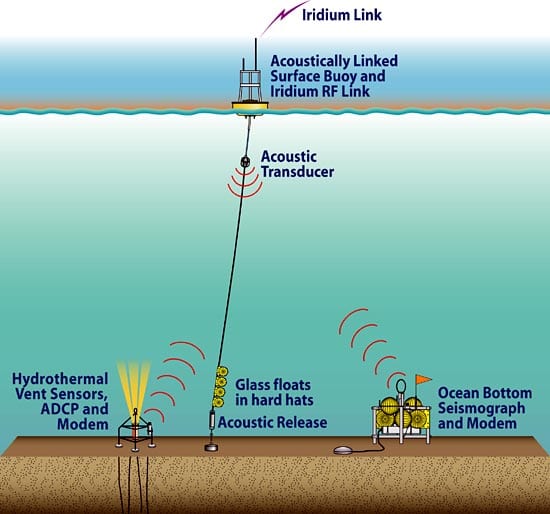A New Seafloor Observatory System
July 1, 2004
Monitoring earthquakes and changing ocean conditions, and adapting experiments to those changes, will now be possible with a new type of acoustically-linked moored observatory developed by WHOI scientists and engineers with colleagues at the University of Washington. The new observatory allows, for the first time, two-way communication between instruments on the seafloor or in the water column and the surface buoy as well as real-time retrieval of data using high speed acoustic modems and satellites.
A prototype system was deployed earlier this year in deep water in the northeast Pacific off Vancouver, British Columbia, for a 15-month demonstration project. A variety of sensors, from earthquake monitoring instruments to temperature, chemical and pressure sensors and hydrothermal flow meters, are being tested with the acoustic modems at two seafloor nodes. Meteorological sensors are mounted on the surface buoy, with current meters and other instruments in place on the mooring in the upper ocean. Data is sent to shore several times a day by satellite, enabling scientists to adapt their experiments to changing conditions from their laboratories around the country. Scientists hope this new system, which can be relocated after a period of time or deployed quickly for rapid response to an environmental situation, will be part of an integrated ocean observing system.

